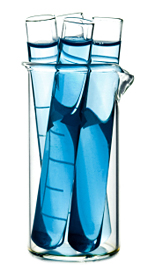| |
 |
|
Human Umbilical Cord Blood Cells Differentiate into Muscle in sjl Muscular Dystrophy Mice
Kimi Y. Kong, Jingmei Ren, Morey Kraus, Seth P. Finklestein, Robert H. Brown Jr. aDay Neuromuscular Research Laboratory, Massachusetts General Hospital-East, Harvard Medical School, Charlestown, Massachusetts, USA; bViaCell, Inc., Worcester, Massachusetts, USA
Key Words. Dysferlin - Miyoshi myopathy - Limb girdle muscular dystrophy type 2B sjl mice - Human umbilical cord blood
Abstract
Limb girdle muscular dystrophy type 2B form (LGMD- 2B) and Miyoshi myopathy (MM) are both caused by mutations in the dysferlin (dysf) gene. In this study, we used dysferlin-deficient sjl mice as a mouse model to study cell therapy for LGMD-2B and MM. A single-blind study evaluated the therapeutic potential of human umbilical cord blood (HUCB) as a source of myogenic progenitor stem cells. Three groups of donor cells were used: unfractionated mononuclear HUCB cells, HUCB subfractionated to enrich for cells that were negative for lineage surface markers (LIN-) and substantially enriched for the CD34 surface marker (CD34+), and irra- diated control spleen cells. We administrated 1 ? 106 donor cells to each animal intravenously and euthanized them at different time points (1-12 weeks) after trans- plantation. All animals were immunosuppressed (FK506 and leflunomide) from the day before the injection until the time of euthanasia. Immunohistochemical analyses documented that a small number of human cells from the whole HUCB and LIN-CD34+/--enriched HUCB sub- groups engraft in the recipient muscle to express both dysferlin and human-specific dystrophin at 12 weeks after transplantation. We conclude that myogenic pro- genitor cells are present in the HUCB, that they can dis- seminate into muscle after intravenous administration, and that they are capable of myogenic differentiation in host muscle. Stem Cells 2004;22:981-993
Introduction
Progressive muscle wasting and weakness characterize mus- cular dystrophies. A subgroup of autosomal recessive dys- trophies, the limb girdle muscular dystrophies (LGMDs), is characterized by weakness and wasting of muscles of the pelvic and shoulder girdle [1]. Another dystrophy, Miyoshi myopathy (MM), affects distal muscles at onset, with prefer- ential early involvement of the gastrocnemius muscle. Muta- tions in a novel muscle gene, dysferlin, cause the type 2B form of LGMD (LGMD-2B) and MM; dysferlin expression is reduced or absent in these patients [2, 3]. A 171-bp dele- tion in the murine dysf gene was detected in the sjl mice, with a corresponding reduction in dysferlin levels to 15% of nor- mal [4]. Thus, the sjl mouse is a natural model of LGMD- 2B/MM.
Muscle cells are formed developmentally by the fusion of multiple muscle precursor cells and are therefore multinu- cleated. Moreover, normal adult muscle retains a population of satellite cells that are capable of differentiating into myoblasts and fusing to regenerate muscle after injury.
Full Abstract
|
|


